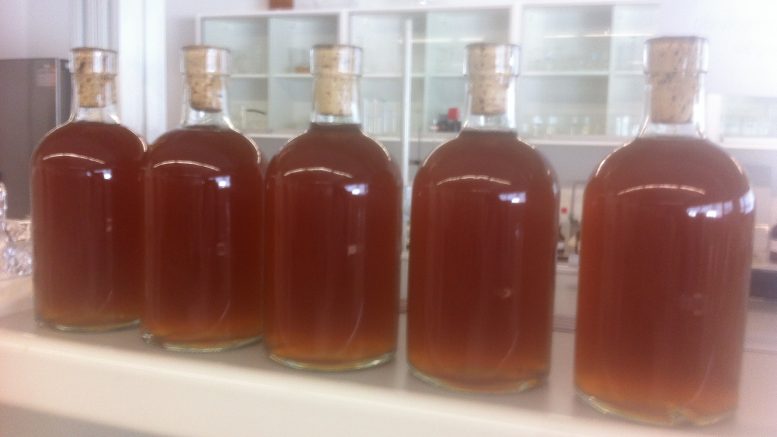Prediction Power and Accuracy of Forced Ageing – Matching Sensory and Analytical Results for Lager Beer
F. Lehnhardt, J. Steiner, M. Gastl and T. Becker
BrewingScience. May / June 2018 (Vol. 71). DOI: 10.23763/BrSc18-05lehnhardt
Para quem se preocupa com o envelhecimento (prazo de validade) da suas cervejas. Trabalho dos colegas de BGT Weihenstephan demosntra as semelhanças e diferenças entre envelhecimento natural (17 meses a 20ºC) e forçado (até 9 dias a 40º).
Destaca-se
- O envelhecimento forçado durante 4 dias a 40°C foi capaz de prever o envelhecimento natural de 3 a 5 meses, entretanto, 4 dias de envelhecimento forçado não foram capazes de prever satisfatoriamente todos os indicadores de envelhecimento.
- Houve diferença sensorial entre os processos de envelhecimento
- Por técinica de Cromatografia gasosa – olfatometria (GC-O) foi possivel de determinar se as amostras estavam envelhecidas, entretanto, não foi possível a previsão do grau de envelhecimento.
- 4 dias de envelhecimento forçado não foram capazes de prever satisfatoriamente todos os indicadores de envelhecimento. No entanto, alguns indicadores aumentaram linearmente nos processos de envelhecimento e, portanto, têm potencial para sererm usados em modelos de previsão do envelhecimento de cervejas Lager (German Helles e German Pilsner).
Abstract
The most common way to predict the shelf life and sensory stability of lager beer is via forced ageing at elevated temperature (40 °C). However, practical results often indicate that forced ageing alters the flavour profile unlike natural ageing. To assess the prediction power of forced ageing using both sensorial and analytical approaches, a lager and a pilsner beer were stored for up to 17 months at 20 °C (natural ageing) and at 40 °C for up to 9 days (forced ageing). The beers were tested by sensory analyses (DLG 5-Point Scheme [Deutsche Landwirtschafts–Gesellschaft e. V], acceptancy, and ageing descriptors). In addition, volatile compounds were measured by solid-phase microextraction (SPME) after on-fibre derivatization with o-(2,3,4,5,6-pentafluorobenzyl)hydroxylamine (PFBHA). Based on (i) sensory analyses (DLG rating and acceptancy test) and (ii) the sum of analytical ageing indicators, it was shown that forced ageing over 4 days at 40 °C was able to well predict natural ageing of 3–5 months. Quantitative descriptive analysis (QDA) revealed a difference in the aroma profile of the two ageing processes. Furthermore, it was found that gas chromatography–olfactometry (GC-O) was able to determine whether samples were aged; although it was not suitable for the prediction of the degree of ageing. Between natural and forced ageing, no clear correlation between the detected aroma active indicators was found. Principal components analysis (PCA) of chosen ageing compounds (i.e., their tendency to increase linearly with ageing) revealed that 4 days of forced ageing was not able to satisfactorily predict all ageing indicators. Nevertheless, some indicators increased linearly in both ageing processes and so could be used for prediction. Therefore, breweries should be aware of the sensory and analytical discrepancies between forced and natural ageing and should critically reconcile the different prediction methods.
Discover more from Beer Learning
Subscribe to get the latest posts sent to your email.

